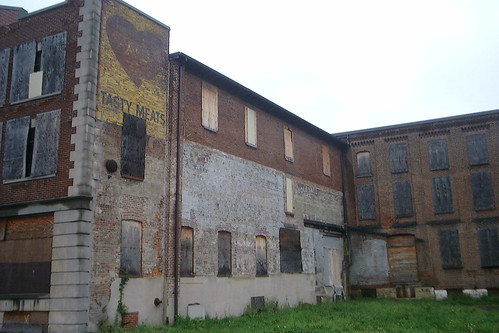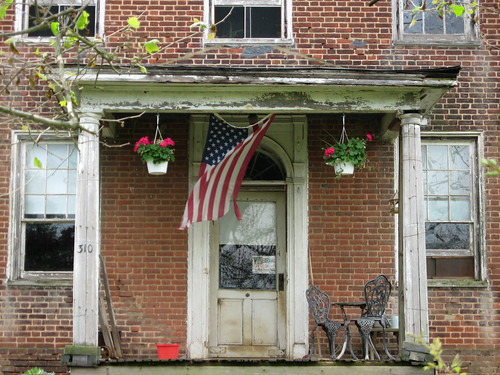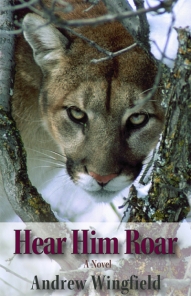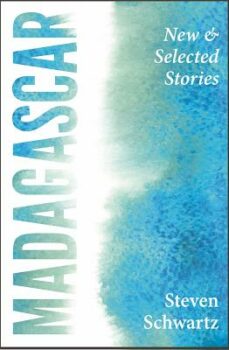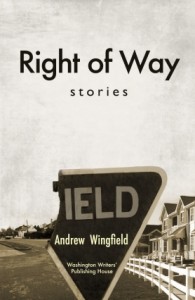 A previously working-class community stripped of its railyard industry, the fictional town of Cleave Springs faces transition in Washington, D.C.’s shadow before and after the tragedies of 9/11. In Right of Way, Andrew Wingfield’s first collection of short stories and the winner of the 2010 Washington Writer’s Publishing House Award, the writer documents change in Cleave Springs, from run-down housing to high-priced, restored middle-class homes. By paying attention to how individual residents respond to this change—a widower clings to his past by trying to preserve his overgrown front yard, a sick woman follows a stranger to discover the past of an antique beer can—Wingfield not only gives his readers a glimpse of a community’s emotional climate, but also provides a portrait of an America facing economic depression, social tension, and an ever-diminishing natural world.
A previously working-class community stripped of its railyard industry, the fictional town of Cleave Springs faces transition in Washington, D.C.’s shadow before and after the tragedies of 9/11. In Right of Way, Andrew Wingfield’s first collection of short stories and the winner of the 2010 Washington Writer’s Publishing House Award, the writer documents change in Cleave Springs, from run-down housing to high-priced, restored middle-class homes. By paying attention to how individual residents respond to this change—a widower clings to his past by trying to preserve his overgrown front yard, a sick woman follows a stranger to discover the past of an antique beer can—Wingfield not only gives his readers a glimpse of a community’s emotional climate, but also provides a portrait of an America facing economic depression, social tension, and an ever-diminishing natural world.
Each of the eight short stories depicts, in quick-witted prose, perspectives of new and old residents of this mixed community. Wingfield’s piecing together of the distinct voices of the citizens of Cleave Springs allows him to craft a larger and more varied narrative than if the author were limited to a handful of perspectives.
For example, Wingfield implements both first- and third-person perspectives that each address a wide swath of topics, ranging from people dealing with such issues as learning disabilities, mental and physical illness, pregnancy, and obsession with the past. In “Lily Pad,” the first-person perspective shifts between a bright student working at the new coffee shop and a boy with Asperger’s syndrome, both of whom try to articulate how their class difference affects their lives. The reader needs this array of themes and characters in order to form a more complete picture of Cleave Springs and its population, one that illuminates how economic change affects individuals in different ways.
This multi-faceted approach also plays to Wingfield’s skill as a storyteller. The author has a wonderful ability to give characters engaging, distinct personalities and vivid histories in the space of only a few paragraphs. This brevity begins immediately in the collection’s first story. In “Precious,” a former Washington politician reflects on his wife’s approach to transition, observing that she “…built another bridge between the New Cleave Springs and Old Cleave Springs, between us and one of the lifelong denizens of the neighborhood.” With just a few short phrases, the reader already knows the actions of the speaker’s wife as she dedicates herself to reducing the tensions that come from economic disparity. Wingfield encourages us to think about how economic disparity should not imply discrimination; instead, we can learn from one another in order to help further a changing neighborhood. The speaker also speculates on this kind of America as a whole, contemplating that
America is a rich country growing poorer all the time in places. Cleave Springs was a real place, a place that rose early last century with the great railyard that spawned it and then declined as the railyard went quiet. A place that had tasted death and was waiting to be coaxed back to life.
Cleave Springs, then, reflects the changing American landscape. Wingfield applies much of modern-day American history as a whole to a small town. He provokes readers to expand their vision beyond these short stories and to really think about how American progress has damaged many previously burgeoning towns, such as the now-abandoned factory industry of Allentown, Pennsylvania, where the husks of the buildings still remain. The people living in Cleave Springs, as in real American towns, feel the ramifications of political turmoil and unrest as surely as they discover some sort of connection to the places they inhabit.
However, this book is not only about the families who have watched Cleave Springs change beneath their feet during their lifetimes. Newcomers to the town—in some cases families dealing with illness and death—also inhabit many of the short stories. In “Wonders of the World,” a wife battling MS tries to find meaning in an antique, mint condition Justice Lager beer can she discovers in her attic. She seeks out companionship with a can collector to escape from her marathon-runner husband’s financial debts, her inability to care for her child, and her own disease. Some of these families break apart through sudden death. “Heirlooms” describes the ordeal of a radio DJ widower and his fight to keep a dead honey locust tree, a reminder of his deceased wife, despite protests from the neighborhood association. When challenged, he recalls a time before economic prosperity changed the neighborhood, describing his wife and himself as “the first wave of pioneers” who know that “danger was just part of the Cleave Springs experience.”
 He remembers in detail when “after dark, the pioneers holed up in their houses and yielded the streets to a large contingent of addicts and thugs. The right of way playground…functioned as an evening drug emporium.” The removal of the honey locust sparks a bond between himself and the previous owner of his arts and craft Sears home. Like many new homeowners who do not understand the history of the place they inhabit, once the narrator understands more about where he lives, he begins to appreciate the old inhabitants who have lived there for generations. We continue to see this resurgence of historical inquiry into old homes and neighborhoods, where people discover and even contact previous owners of their homes.
He remembers in detail when “after dark, the pioneers holed up in their houses and yielded the streets to a large contingent of addicts and thugs. The right of way playground…functioned as an evening drug emporium.” The removal of the honey locust sparks a bond between himself and the previous owner of his arts and craft Sears home. Like many new homeowners who do not understand the history of the place they inhabit, once the narrator understands more about where he lives, he begins to appreciate the old inhabitants who have lived there for generations. We continue to see this resurgence of historical inquiry into old homes and neighborhoods, where people discover and even contact previous owners of their homes.
While some residents continue to dwell on the older days of Cleave Springs, others surge forward to gentrify the working-class neighborhood with specialty stores, cafes, and clean streets. Not only do some citizens wish to improve the neighborhood through progress, but some also seek to protect what others would destroy. The collection’s title story reflects Wingfield’s environmental interests in preserving the natural world, when we see brief flashes of wildness within supposed order. A boy from one of the working-class families lures neighborhood cats to feed a lone coyote living in the overgrown brush of the right of way. He tries to hide the last remaining coyote before the untamed weeds become a neatly manicured and paved path.
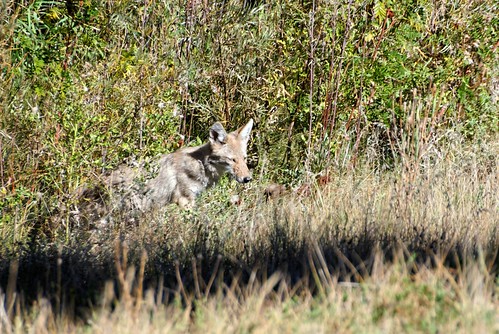
The boy leads a newcomer, a soon-to-be-mother from California, into the overgrown weeds of the neighborhood. While the woman’s husband remains wary of the boy, the woman trusts him as he guides her through the “strange geography” and “walls of vegetation” to show her the coyote, which disappears after the neighborhood association clears the right of way. Years later, the woman brings her children there to “lead them in a chorus of howls.” This story, in evoking the collection’s title, illuminates economic and social progress in a light that depicts the destruction of the natural plant life in old neighborhoods as removing an integral part of the community. In this new neighborhood, the original wildlife residents now have no right to public space, which we see in everyday news as black bears, moose, and coyotes stumble into suburbs and towns as they continue to be pushed out of their original habitat. Although a newcomer, the woman continues to remember the coyote and pays tribute to it, despite its absence.
Considering its timeframe and the historical events that intersect with the narratives of these stories, American rights and the freedoms of its citizens are a natural concern. In “Air Space,” two neighbors, watching the 9/11 attacks on the Pentagon, find solace in each other after they hear an explosion that “curdled the air outside.” Just as political parties chose to support or dissociate themselves from the War on Terror, the two drift apart after disagreeing about the ways the U.S. government responds to the attacks. The woman moves to France in order to feel safer, while her lover remains in the States, convinced of the legitimacy of U.S. policies yet embittered by her departure.
Right of Way captures the ways politics influence our everyday lives and shows how Cleave Springs functions as a microcosm for America’s changing landscapes. In addressing political and social issues with a light touch, this collection does not feel like a sermon but a reminder to pay closer attention. Just like the mother who leads her children in a howl to commemorate the loss that always comes with a sense of progress, Wingfield reminds the reader of the ramifications of change, how it can bring people together and also push them apart.


